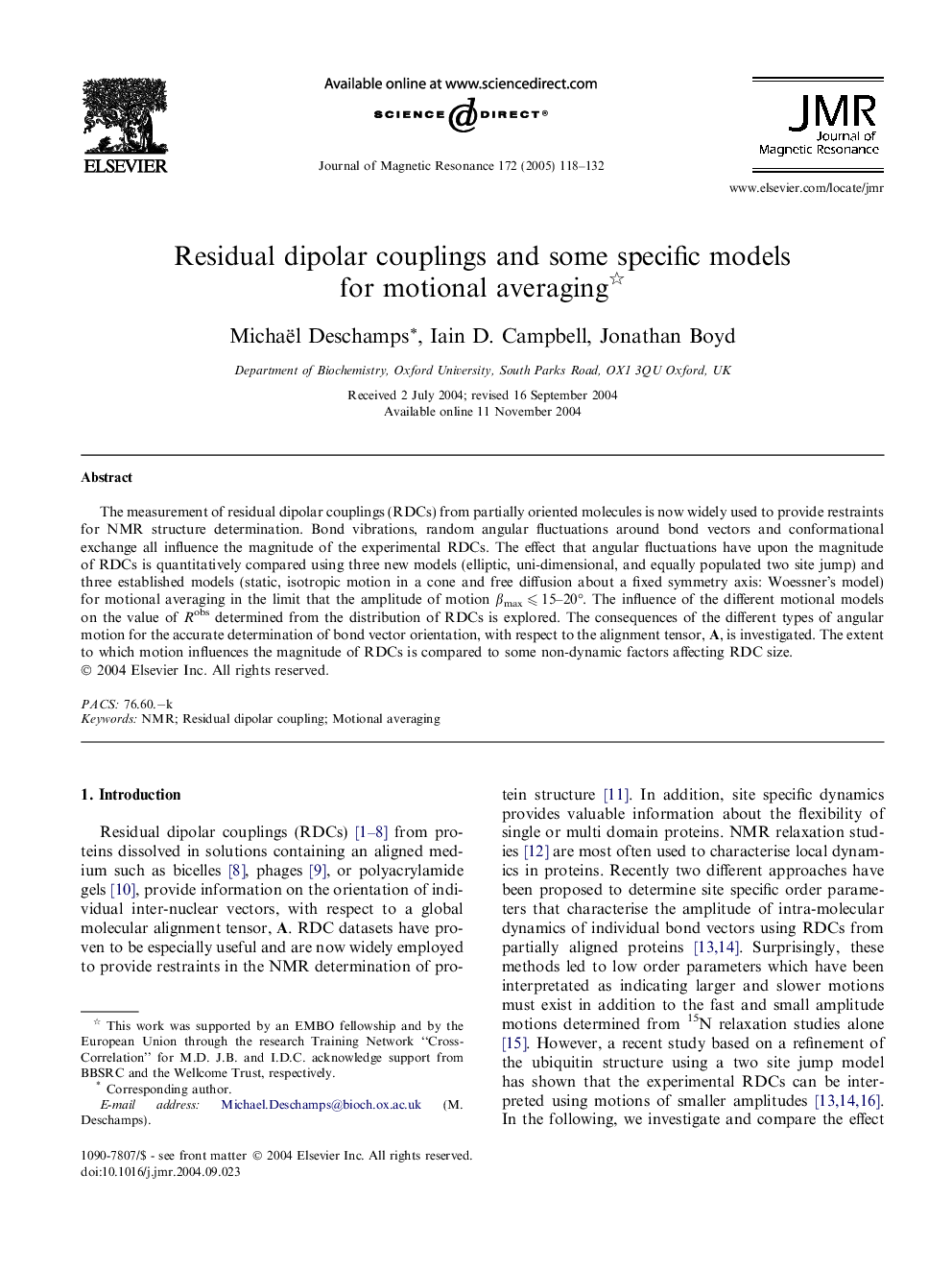| Article ID | Journal | Published Year | Pages | File Type |
|---|---|---|---|---|
| 9587609 | Journal of Magnetic Resonance | 2005 | 15 Pages |
Abstract
The measurement of residual dipolar couplings (RDCs) from partially oriented molecules is now widely used to provide restraints for NMR structure determination. Bond vibrations, random angular fluctuations around bond vectors and conformational exchange all influence the magnitude of the experimental RDCs. The effect that angular fluctuations have upon the magnitude of RDCs is quantitatively compared using three new models (elliptic, uni-dimensional, and equally populated two site jump) and three established models (static, isotropic motion in a cone and free diffusion about a fixed symmetry axis: Woessner's model) for motional averaging in the limit that the amplitude of motion βmax ⩽ 15-20°. The influence of the different motional models on the value of Robs determined from the distribution of RDCs is explored. The consequences of the different types of angular motion for the accurate determination of bond vector orientation, with respect to the alignment tensor, A, is investigated. The extent to which motion influences the magnitude of RDCs is compared to some non-dynamic factors affecting RDC size.
Related Topics
Physical Sciences and Engineering
Chemistry
Physical and Theoretical Chemistry
Authors
Michaël Deschamps, Iain D. Campbell, Jonathan Boyd,
